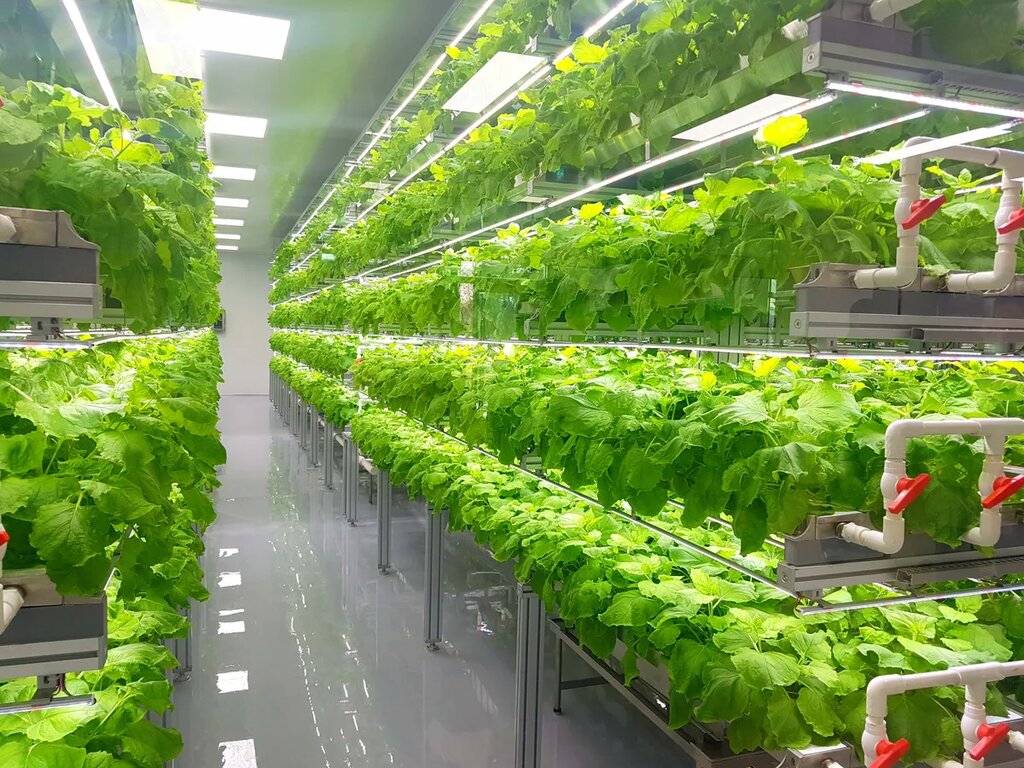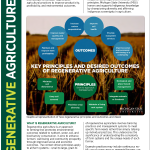Imagine transforming your small balcony, cramped kitchen corner, or tiny backyard into a lush, thriving garden. Sounds impossible, right?
Not with vertical organic farming. This innovative approach allows you to maximize your limited spaces while growing fresh, healthy produce right at home. Why let space constraints stop you from enjoying the benefits of organic farming? By stacking plants vertically, you can cultivate a variety of vegetables, herbs, and fruits, even in the tiniest of areas.
Plus, with organic farming, you’re not just growing food; you’re nurturing a lifestyle that’s healthier for you and the environment. Curious about how you can start your own vertical organic farm? Keep reading to discover the tips, tricks, and essentials you need to make the most of your limited space. Your journey to a sustainable, green oasis begins now.

Benefits Of Vertical Organic Farming
Vertical organic farming offers a smart solution for those with limited space. This innovative method stacks plants vertically, maximizing the growing area. It’s ideal for urban dwellers or anyone with restricted land. The benefits extend beyond just space-saving. Vertical organic farming promotes healthier, fresher produce. It also supports sustainable practices, benefiting both the environment and the grower.
Maximized Space Utilization
Growing plants vertically optimizes space. Even small areas can produce ample crops. This approach is perfect for balconies or small yards. Vertical setups make efficient use of every inch.
Improved Crop Yield
Vertical farming can increase productivity. More plants fit into a smaller area. This setup can lead to a higher yield. It’s a practical solution for those wanting more produce.
Enhanced Plant Health
Organic methods improve soil and plant health. Vertical structures improve air circulation. Better airflow reduces disease risks. Plants grow stronger and healthier.
Reduced Water Usage
Vertical farming systems often use less water. They incorporate drip irrigation methods. This minimizes water waste. It’s an eco-friendly choice for growers.
Ease Of Access
Vertical farms are easier to manage. Plants are at a convenient height. This reduces strain during maintenance. Harvesting becomes more straightforward and less labor-intensive.
Environmentally Friendly
Organic practices reduce chemical use. Vertical systems promote sustainability. They use less land and fewer resources. This helps protect the environment.
Visual Appeal
Vertical gardens are aesthetically pleasing. They can enhance any space. They add greenery to urban environments. This can improve mental well-being.

Key Techniques And Methods
Vertical organic farming maximizes small spaces through stacked layers of soil or hydroponic systems. This method allows urban dwellers to grow fresh produce efficiently. It utilizes natural light and water recycling to support plant growth in limited areas.
Vertical organic farming is a game-changer for those with limited space but a big passion for gardening. By utilizing key techniques and methods, you can maximize your yield even in the smallest of areas. These strategies not only make efficient use of space but also ensure your plants thrive with the nutrients they need. Let’s delve into the specifics that can help you transform your tiny corner into a lush, productive garden.Hydroponic Systems
Hydroponics is an innovative method that involves growing plants without soil. Instead, plants are nourished by nutrient-rich water solutions. This system is perfect for vertical farming, as it allows you to stack plants in layers. Imagine growing lettuce in your kitchen, in a neat vertical stack, using just water and nutrients. You not only save space but also control the nutrients your plants receive. Have you ever wondered how much more you could grow without soil?Aeroponic Systems
Aeroponics takes it a step further by misting plant roots with nutrient-rich water. This method allows for maximum oxygen exposure, promoting faster growth. The absence of soil means you can grow plants in a truly vertical manner, even on a wall. Think about growing strawberries in a narrow balcony with an aeroponic setup. The results might surprise you! Would you believe that this method can actually produce a higher yield than traditional soil-based methods?Vertical Planters
Vertical planters are a fantastic way to utilize your vertical space. These structures can be made from recycled materials like pallets or PVC pipes. They’re ideal for growing herbs, small fruits, and vegetables. Picture a vibrant, green wall of herbs in your kitchen, ready to flavor your culinary creations. All you need is a sunny spot and a bit of creativity. Have you thought about what other everyday items you could repurpose to build your own vertical garden?Companion Planting
Companion planting involves growing different plants together to enhance growth. Some plants can deter pests, while others can improve soil nutrients. Consider planting tomatoes with basil in your vertical garden. Not only do they complement each other on the plate, but basil can also help repel pests from tomatoes. What combinations might work best in your space?Smart Irrigation Systems
Efficient water use is crucial in vertical farming. Smart irrigation systems, like drip irrigation, ensure your plants get the right amount of water. These systems are easily integrated into vertical setups and can even be automated. Imagine never having to worry about over or under-watering your plants. How much time and resources could you save by setting up a smart irrigation system? By applying these techniques, you’re not just growing plants; you’re cultivating a sustainable lifestyle. These methods empower you to make the most of your space and resources. What will you grow in your vertical garden? The possibilities are endless.Essential Equipment And Materials
Vertical organic farming transforms small spaces into productive gardens. Essential equipment includes vertical racks, grow lights, and nutrient-rich soil. These tools enable efficient crop growth, maximizing limited areas.
Thinking about diving into vertical organic farming in limited spaces? Understanding the essential equipment and materials can make all the difference in transforming your space into a lush, productive garden. Here’s a handy guide to get you started, ensuring your efforts are both efficient and rewarding.Vertical Planters Or Towers
Choosing the right vertical planters or towers is crucial. These structures allow you to stack multiple layers of plants vertically, maximizing space. Look for sturdy materials like recycled plastic or metal, which offer durability and environmental friendliness.Quality Soil And Compost
The foundation of your vertical farm is quality soil. Opt for organic soil rich in nutrients to give your plants the best start. Mixing in compost can enhance fertility and improve water retention, helping your plants thrive.Drip Irrigation System
Watering can be a challenge in vertical setups. A drip irrigation system ensures each plant receives the right amount of water without wastage. This setup saves time and effort, and you won’t worry about overwatering or underwatering your plants.Grow Lights
If natural sunlight is limited, grow lights become essential. LED grow lights are energy-efficient and can mimic the sun’s spectrum, promoting healthy plant growth. Position them strategically to cover all layers of your vertical garden.Support Structures
Some plants need a little extra help to grow upright. Trellises, stakes, or netting provide the necessary support and prevent plants from sagging. These structures are easy to install and can be adjusted as your plants grow.Ph And Moisture Meters
Monitoring soil conditions is vital for plant health. pH and moisture meters help you keep track of soil acidity and moisture levels. These tools are inexpensive and provide instant feedback, allowing you to make quick adjustments.Pest Control Solutions
Keeping your vertical farm pest-free is essential. Organic pest control solutions, like neem oil or insecticidal soap, protect your plants without harming the environment. Regularly inspect your plants to catch potential issues early. Have you ever thought about how these tools could change the way you garden? With the right equipment and materials, even the smallest spaces can become thriving vertical farms. What’s your next step in transforming your limited space into a green oasis?Challenges And Solutions
Vertical organic farming faces challenges like limited sunlight and water distribution in tight spaces. Solutions include using LED grow lights and efficient drip irrigation systems. These methods optimize growth while conserving space and resources.
Vertical organic farming for limited spaces offers a promising solution to urban gardening challenges. However, like any innovative approach, it comes with its own set of hurdles. Understanding these challenges and finding effective solutions can make all the difference in turning your vertical garden into a thriving oasis.Space Limitations And Structural Support
Limited space is the primary reason people opt for vertical farming. Yet, maximizing every inch can be tricky. You might find yourself wondering if you have enough room to support your garden’s growth. Consider using sturdy materials like metal or treated wood to build your structure. They provide the necessary support for your plants. Shelves and wall-mounted systems are excellent for organizing your plants vertically.Light Access And Optimization
Access to sufficient light is crucial for plant growth. In vertical setups, lower sections can be deprived of sunlight. This can stunt growth or lead to uneven plant development. Rotate your plants regularly to ensure even light distribution. If natural light is scarce, invest in LED grow lights. They mimic sunlight and can be adjusted to your plants’ needs.Watering And Drainage Concerns
Watering a vertical garden can be a balancing act. Too much water can cause root rot, while too little will dry out your plants. Proper drainage is vital. Install drip irrigation systems that provide consistent moisture without over-saturating the soil. Ensure your structure includes drainage trays to catch excess water and prevent damage to your floors or walls.Pest Management And Disease Control
Pests and diseases can quickly spread in confined spaces. Keeping them at bay requires diligence. Regularly inspect your plants for signs of pests. Use organic repellents and introduce beneficial insects like ladybugs. They naturally control harmful pests without the need for chemicals.Soil Quality And Nutrient Supply
In a vertical setup, soil quality and nutrients can be overlooked. Yet, they are fundamental to your plants’ health. Opt for high-quality, organic potting soil. Supplement it with organic fertilizers to replenish nutrients. Regular soil testing can help you tailor the nutrient supply to your plants’ needs. Vertical organic farming can transform even the smallest spaces into lush, productive gardens. By addressing these challenges with practical solutions, you can ensure your garden flourishes. What strategies will you implement to make the most of your vertical space?
Conclusion
Vertical organic farming brings gardening to small spaces. It offers fresh produce without needing a big yard. This method suits urban dwellers and those with limited space. It promotes healthy eating and reduces grocery costs. Vertical farming is eco-friendly, using less water and no harmful chemicals.
Anyone can start with simple materials at home. It’s a great way to enjoy gardening and benefit the environment. Embrace vertical organic farming and transform your small space into a green oasis. Begin today and reap the rewards of your labor.
Happy gardening!

